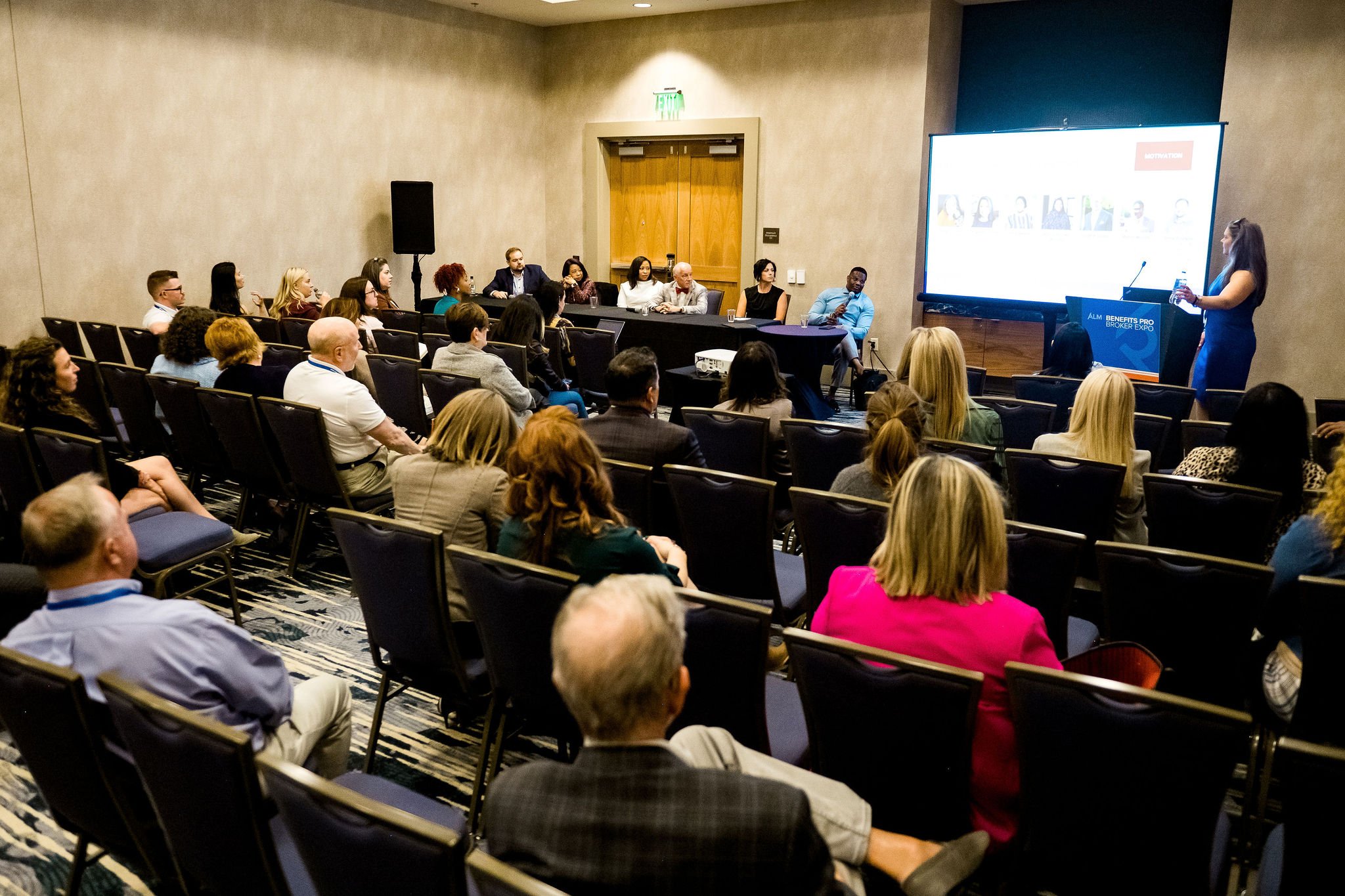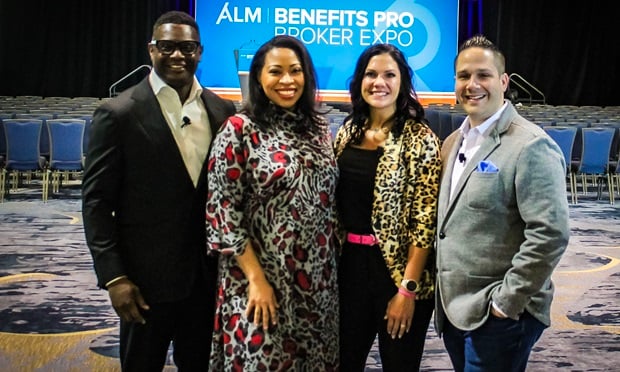Benefits communications is no laughing matter. Just take a lookat the brochure you received in the mail or the newsletter thatjust hit your inbox. An inch beneath the bursts of Technicolor,toothpaste grins and eager-to-please copy is a grim determinationto convey very serious information communicated with the very bestof intentions—with your health and benefit very much in mind(naturally).
|At best, it's like the bedside manner of a physician whosegeniality portends unwelcome news and a dose of stern advice. Atworst, it's the equivalent of an overbearing yet well-meaningparent insisting you eat your vegetables because it's good foryou.
|Now take a step back and consider who is on the receiving end ofthese communications. You would be correct to say that it'stypically an employee who works somewhat fixed hours, receives asalary with benefits, does what's expected—in some cases above andbeyond—and is a captive audience for all manner of company-issuedinformation. You would also be correct to say it's a person who hasinterests and dreams beyond the scope and “capture” of theworkplace.
|This is fundamentally why corporate communications generally,and benefits communications specifically, almost invariably failand why they are historically and continually met with resistance,indifference and even hostility. Effective communications mustbegin with a rethinking of what people—not employees—read, whatthey gravitate to, and what engages and motivates them. Thechallenge becomes, in short, how to craft communications into thosethat fundamentally entertain.
That's entertainment!
To entertain is not simply to amuse. In the context of benefitscommunications, to entertain is to engage and disarm withcompelling news and information, to communicate with originalityand wit and to focus on subjects that are inherentlyfascinating.
|Reorienting benefits communications content around individualsand things that people care about, and changing the method androutine in which communications are delivered (and interactedwith), will improve engagement, utilization, and, ultimately,influence behavior. This will arm brokers with a potent two-waysolution: A cost-effective self-help program for employers andtheir employees (which is to say a highly saleable deliverable),and a tool that sustains broker-employer/end-usercommunications—key to brokers looking to demonstrate ongoingvalue.
Content matters
The fable of the scorpion and the frog speaks to theimmutability of character.
|While the scorpion understands this, standard benefitscommunications rarely display this level of self-awareness.Benefits communications can take many forms but generally it iswhat it is: corporate, generic and uninspired. We can speculate whythese communications tend toward the bland institutional, but theprevailing editorial (or corporate) approach to content isinstructive.
|Here's a simple thought experiment: which of the followingapproaches would you find inherently more compelling? A work/lifecolumn in the monthly newsletter on using time management skills,or a concise 500-word feature on Angelina Jolie juggling familyresponsibilities while on location? A piece filed under diseasemanagement on the terms of your STD or LTDplan, or a profile of NHL Hall of Famer Mario Lemieux and how hekeeps his health problems in check? An article from an HRadministrator on the benefits of diet and exercise with an overviewof the company's wellness programs, or an interview with Tyra Bankson being a model of health no matter your size? A checklist toidentify risk factors for heart disease, or an incisive profile offormer Olympic skater Peggy Fleming on her active approach to lowering cholesterol?
|While readers might not find all (or any) of the abovepersonalities inherently of great interest, it's safe to say mostwill find personality-driven features, profiles or interviews moreengaging than articles focused exclusively on issues. This is not arevelation; it's what editors of every publication from The NewYorker to People magazine fundamentally understand. Granted, few HRand/or corporate communications departments have the resources andcapabilities required to take this approach to benefitscommunications, but there needs to be more thinking about the typeof content that people are drawn to and fascinated by rather thanassuming that good intentions, combined with lively writing andfresh-scrubbed faces will suffice.
|How delivery can extend reach, sustainengagement
|A reporter once asked Dick Cavett to name the 10 rules ofconversation. His first response was that he didn't know there wereany rules of conversation. After some prodding he finally came upwith several including having a language in common, being in thesame room or being within hearing distance of the person you arespeaking to. If only it were that simple.
|In a typical business day, people at every level deal with asteady stream of communications. And usually, unless a news itemhits a user's desktop at just the right time, it's glossed over orsimply ignored. The goal is to make benefits communicationsrelevant—and not just every so often or when a decision needs to bemade, but every day for general information and entertainment. Theoverarching mission is to deliver benefitsinformation, news and advice in a fresh, highly readableand attractive package.
|According to a recent Aflac study, most employees report theiremployers communicate less than three times a year about benefits,with 24 percent doing so more than three times a year. In fact, 44percent of employees claim they receive too little communicationabout benefits from their employer. Moreover, according toMetLife's most recent study of employee benefits trends, 70 percentof employers say they do not use social media, and the studyuncovers some of the perceived barriers to including it in thecommunications mix. Some 25 percent of employers believe there is alack of interest on the part of their employees while 37 percentcite lack of resources.
|Despite these reservations, the MetLife study also shows manycompanies recognize the advantages of using social media. Thesecompanies see new media as a way of engaging employees, and 74percent acknowledge it provides an easy, convenient way foremployees to obtain benefits information. Yet only 8 percent ofthose who do not currently use some form of social media plan tolook into it in the next year.
||Instead of issuing a steady stream of static, one-waycommunications—think mailed newsletters or brochures—we have thetools to implement fluid, dynamic interactive programs combiningelectronic distribution and community. Imagine news and informationpackaged in the context of a magazine-type profile or feature storyas well as an interactive component leveraging a dedicated companyTwitter page where a community of users can find timely informationand a platform for meaningful interaction during the course of thebusiness day.
|Topics ranging from the timely and serious to the peripheral andamusing can both garner attention and prompt a response. Alsohelpful is to embed links that route users to additionalresources.
The bad news is the good news
To paraphrase the well-worn Wall Street maxim, the confusioncharacterizing the benefits landscape is good news for brokers.Yes, there are significant challenges—from companies looking to cutoverhead to threats to their time-honored business model (read:ever-diminishing commissions). However, brokers able to demonstratevalue and act as “Sherpa guides” to employer groups—helping themnavigate an increasingly complex and dizzying benefits landscape,showing them the path to prosperity, productivity and wellnesswhile minimizing costs—will be able to differentiate themselves inan increasingly punishing and competitivemarketplace.
|For brokers, the first order of business is to find ways tobroaden and deepen client relationships and help facilitatedemonstrably effective solutions that hold the line on health carecosts. Brokers, providers and employers all have a clear stake inextending their benefits enrollment platforms and decision supportsystems with information and tools that make end users (that'semployees) more proactive in managing their health andwell-being.
|The key challenge is in developing, delivering and sustainingeffective, “actionable” user communications that engage, inform andmotivate. Oh yes, and entertain. Implementing a program thatcombines popular culture and social media with health and wellnesswill go a long way in positioning brokers to thrive in an uncertainfuture. It all comes down to demonstrating value and embracing theguiding principle of the entertainment sector: there's no businesslike show business.
|Charles Epstein is president of BackBone. He can be reachedat 561-470-0965 or [email protected].
|Ja'Nene Kane is president and COO of benefitsCONNECT. Shecan be reached at 916-421-4000 or [email protected].
Complete your profile to continue reading and get FREE access to BenefitsPRO, part of your ALM digital membership.
Your access to unlimited BenefitsPRO content isn’t changing.
Once you are an ALM digital member, you’ll receive:
- Critical BenefitsPRO information including cutting edge post-reform success strategies, access to educational webcasts and videos, resources from industry leaders, and informative Newsletters.
- Exclusive discounts on ALM, BenefitsPRO magazine and BenefitsPRO.com events
- Access to other award-winning ALM websites including ThinkAdvisor.com and Law.com
Already have an account? Sign In
© 2024 ALM Global, LLC, All Rights Reserved. Request academic re-use from www.copyright.com. All other uses, submit a request to [email protected]. For more information visit Asset & Logo Licensing.








